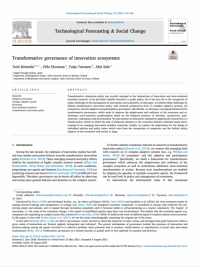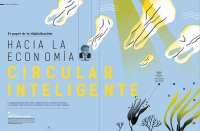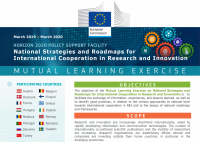What we do, and with whom?
CORPORATES
START-UPS
POLICYMAKERS

International analysis on mission-oriented instruments
At the Insight Foresight Institute, we have recently conducted a study for ENISA – Empresa Nacional de Innovacion, S.A. on this subject focusing on initiatives launched by public sector entities. Our mapping points to initiatives that explicitly address mission orientation and ecosystem-based approaches to a greater or lesser extent. Our work helps to understand how mission-oriented innovation initiatives operate and everything that actually happens, from the pre-planning stages to the moment they are launched, and we start to see short- and long-term results, going through all the necessary economic, political and social organization and management to make each initiative happen.

Transformative governance of innovation ecosystems
The CEO of IFI, Totti Könnölä publishes with Aalto University professors in a leading research journal ‘Technological Forecasting and Social Change’ a paper on transformative governance of innovation ecosystems. New lens for policy and management The framework of transformative governance developed in the paper, offers a powerful new lens for policy and management contexts which […]

Action, agency, actionable: the semantics of innovation
José Manuel Leceta, chairman of IFI Advisory Board, writes on innovation in the Spanish newspaper, CincoDías. “… When I prefaced the book of my friend Ángel Alba ‘Minimum Viable Manual of Innovation’ (Innolandia), I pointed out my particular definition of innovation as knowledge in action. But my interest in philosophy leads me to wonder […]

Fractal Innovation
The Chairman of IFI Advisory Board, José Manuel Leceta connects in his latest book the innovation with the fractals that are mathematical objects present in nature. Halfway between art and science, they describe complexity with simplicity, knowing the underlying pattern that is reproduced at different levels.

Towards smart circular economy; the role of digitalisation
The Digital Development and Society Forum of the Spain Digital Foundation supported by the Insight Foresight Institute (IFI) has prepared a dossier in Spanish entitled “Towards the Intelligent Circular Economy; the role of digitization” tries to contribute ideas proposing to take advantage of the potential of digitization to change the model of the current linear […]

Towards the smart and circular economy
CEO of Insight Foresight Institute, Totti Könnölä, writes in the Telos Magazine on the role of digitalization in circular economy. Digitalization can significantly reduce emission levels and the polluting impact of human activity on the environment. The economic model that society has lived up to now is the linear one that follows the sequence: extract […]

Task force to address water scarcity in Southern Europe
The CEO of Insight Foresight Institute, Totti Könnölä, participates in the task force of EIT-KICs (Climate-KIC, EIT Food, EIT Manufacturing, EIT RawMaterials). This Body of Knowledge works on finding innovative solutions for water scarcity in Southern Europe.

National strategies and roadmaps for international R&I Cooperation
IFI supports the Member States to develop their Strategies and Roadmaps for International Cooperation in Research and Innovation. Totti Könnölä, CEO of IFI, participates in the expert panel of the Policy Support Facility for the European Commission.

Foresight services to the European Commission
As part of the consortium led by the Austrian Institute of Technology, IFI supports the European Commission by providing “foresight on demand” services in science, technology, research and innovation policy. DG Research and Innovation has set-up a “Foresight-On-Demand” (FOD) mechanism to respond to the demand for quick inputs to policy-making, drawn on the best […]

Advise to Andalusia in the industrial transition towards carbon neutrality
The CEO of IFI, Totti Könnölä advises the Joint Research Centre of the European Commission in its work to support the Andalusian Government to create industrial transition towards carbon neutrality. Within the frame of the project RIS3 Support to Lagging Regions, the JRC has launched a Working Group on Understanding and Managing Industrial Transitions.
We build on our expert network and advanced online technologies.
Knowledge Platform

Insight - Monitoring

Foresight - Horizon Scanning

Engagement - Online Collaboration
With us, gain insight and foresight to transform your innovation ecosystem.
Insight Foresight Institute (IFI) is a research and consultancy firm based in Madrid (Spain). We orchestrate expertise in entrepreneurial innovation ecosystems to spark and drive structural changes, enhance resilience and direct society towards social, economic and environmental sustainability.
Our community is organised around:
- The Management Team responsible of the orchestration of all IFI activities.
- High-level Advisory Board of renowned global leaders in innovation management, policy and governance.
- Innovation Council of recognised senior experts and mentors engaged in ecosystem projects.
- Expert Network of professionals engaged in ecosystem projects.
- Strategic alliances with partner organisations.
The board, council and expert network members engage in their personal capacity in our activities. If you are interested in participating in our community, please, write to us: info@if-institute.org.
You can also sign up with LinkedIn to receive our newsletter.
Strategic partner organisations with complementary assets and geographic coverage.

The Royal Academy of Engineering (ES)
The Royal Academy of Engineering is an institution that is at the vanguard of technical knowledge, that promotes excellence, quality and competence of Spanish Engineering in their diverse disciplines and acting fields. The principal asset of the Royal Academy of Engineering comes from the academics that compose it: 60 outstanding professionals from different disciplines of […]

Orchidea Innovations (FI)
Orchidea Innovations is leading software company in the field on innovation. They help their customers to systemize and involve the whole organization in innovation. Orchidea SaaS platform enables employees, customers and partners to participate in innovation. Their software and expertise help the customers to accelerate innovation which leads to more profitable business. Orchidea was founded […]

INNOGREEN Research (ES)
INNOGREEN Research was established in Madrid (Spain) as an initiative to consolidate many years of joint efforts of researchers around eco-innovation and circular economy research to advance knowledge and achieve a wider impact in society.













































